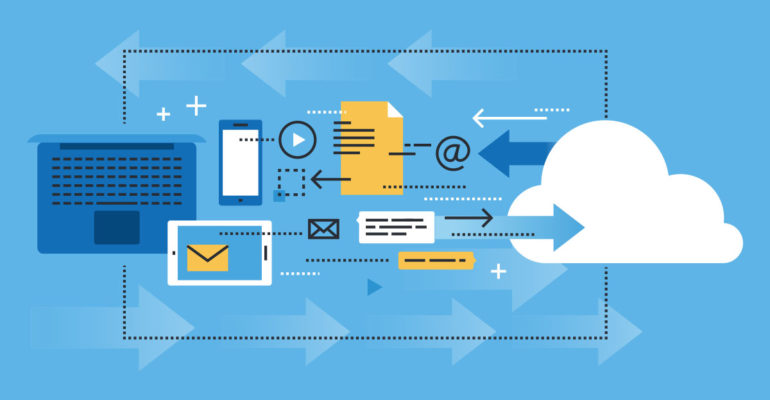Transitioning to the Cloud

Transitioning to the Cloud
Data loss is not a matter of if, it’s a matter of when – and it happens to every company, big or small. More than half of businesses locate their disaster/backup systems in the same physical location as their primary system – red alert! If you only have one copy of your system’s backup at your office, and your hardware fails or a breach occurs and all your data is stolen, then a backup was completely useless to begin with. In a bit of irony, it turns out that the safest place to be during a storm is “in the cloud.”
Cloud computing not only offers back up protection against system malfunctions or natural disasters, it also keeps businesses safe against cybertheft, ransomware, malware, viruses, phishing, cross-site scripting, employees, and the list goes on. It’s not that businesses don’t recognize the importance of having a disaster recovery plan in place. It’s just that they simply have it in the wrong place.
So, let’s say you’ve finally agreed that it’s time to move to the cloud – where do you start?
Here are some recommendations that can help you though the process:
- First off, moving to the cloud doesn’t have to be an all-or-nothing process. Companies that weren’t “born in the cloud,” meaning any company more than a couple years old, need a plan for going cloud. Establish the plan, let your data trickle into the cloud and take your time. No need to jump in head first.
- You must make sure you know your data. Truly understand what is going on before you begin to move your data and applications. Say you were going to sell your house, you first need to clean and organize your belonging before putting them all away in storage. Same exact concept when it comes to transitioning into the cloud, clean and organize before you store.
- Know your options. Public cloud, private cloud or hybrid cloud? Refer to our previous blog, To Cloud, or Not to Cloud, to learn the difference between these types of clouds. How much storage, bandwidth, and support do you want to pay for? Make sure you tailor your cloud service to best fit your company’s needs. What works for someone else might not work for you and vice versa.
- Do your research. Here’s the reality: we have heard and experienced the effects of far too many crappy cloud solution horror stories. Companies that were put up on a half-built cloud solution eventually had to return to their on-premise solutions. With cloud unreliable partners also comes hidden costs such as unexpected fees for the overuse. Choose a reliable provider.
- Who will have access? Who can add, delete, or modify data? What responsibilities belong to who and how will this change with the cloud? After you move into the cloud, it is you who is responsible for defining who can do what. It is crucial to you know your staffs access imitation.
- Add encryption. Most cloud service providers offer encryption features such as service-side encryption to manage your own encryption keys. Who controls and has access to these encryption keys? What data is being is being encrypted and when? Ultimately, you decide how safe your solution is.
While the road ahead may be tough, with these tips in mind, you can begin moving your business processes to the cloud safely and efficiently.

